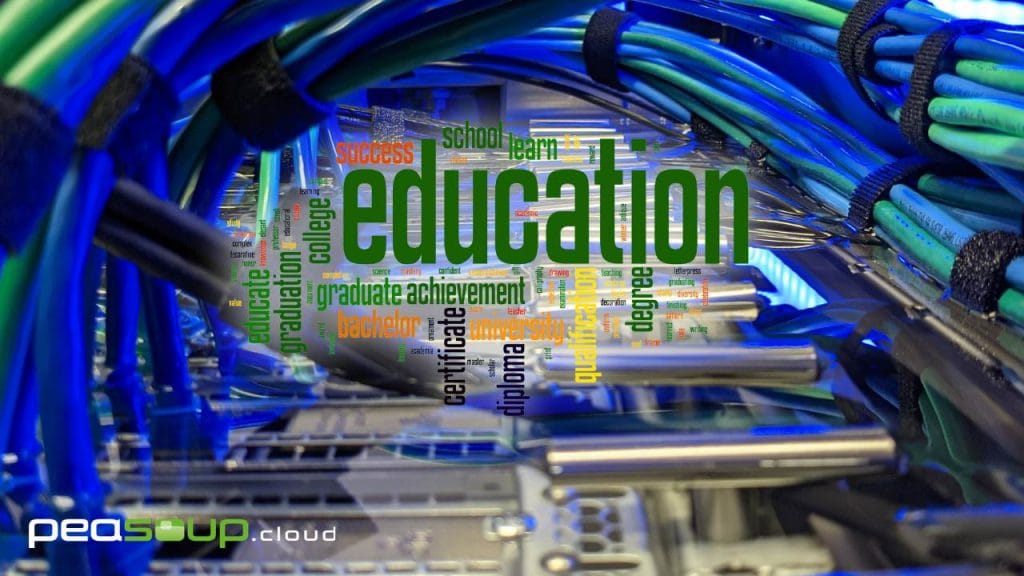Transforming cloud computing in the Education Sector with liquid immersion cooling
Over the past few decades, the world of technology has witnessed remarkable advancements, with cloud computing being one aspect that has revolutionised various industries, including education. Cloud computing enables educational institutions to access and utilise computing resources, storage, and applications online, eliminating the need for on-premise servers and infrastructure. As cloud computing continues to evolve, one innovative method of enhancing efficiency and sustainability in data storage has been liquid immersion cooling. In this article, we will explore the concept of liquid immersion cooling and its potential impact on cloud computing in the education sector.
Understanding Liquid Immersion Cooling
Traditional data centres and cloud servers rely on air cooling to dissipate heat generated by high-performance computing. However, this data centre cooling method can be inefficient and detrimental to the environment, requiring huge energy consumption and substantial maintenance costs. Immersion cooling offers an alternative approach to managing heat and optimising the performance of cloud servers. It involves submerging IT servers directly into a non-conductive (dielectric) cooling liquid. The liquid absorbs heat 1500% more effectively than air, resulting in more efficient cooling and improved performance.
Benefits of Liquid Immersion Cooling in Cloud Computing
Liquid immersion cooling can significantly reduce energy consumption compared to traditional air cooling methods. By eliminating the need for energy-intensive fans and air conditioning units, educational institutions can save on power costs and therefore reduce their carbon footprint.
Improved cooling leads to more stable and optimal operating temperatures for cloud servers, allowing them to operate consistently at higher performance levels. This means better SLAs, faster processing times and better responsiveness for cloud-based educational applications.
Liquid immersion cooling eliminates the need for bulky air cooling infrastructure, enabling data centres to utilise space more efficiently. Reduced space requirements also translate to cost savings on real estate and construction.
The cooling liquid forms a protective barrier around server components, shielding them from contamination such as dust and other external factors that could cause electronic component outages. As a result, the hardware’s lifespan can be extended significantly, reducing the need for frequent replacements and saving money and carbon footprint in the long run.
Without the need for noisy fans liquid immersion cooling offers a much quieter environment making it suitable for educational institutions seeking noise reduction in their infrastructure if deployed on-premise.
Liquid immersion cooling aligns with sustainability goals as it reduces energy consumption and CO2 emissions. Educational institutions can showcase their commitment to environmental responsibility by adopting such eco-friendly practices.
Education Sector
The education sector is embracing cloud computing at an accelerating pace, recognising its potential to transform the learning experience. As institutions increasingly adopt cloud-based services for virtual classrooms, collaborative platforms, and educational applications, the demand for efficient and reliable cloud infrastructure rises.
Educational institutions can leverage the advantages of liquid immersion cooling to enhance their cloud computing capabilities. By integrating this cooling technology into their data centres, universities, schools, and online learning platforms can offer students, educators, and administrators more robust and responsive cloud services.
Moreover, the cost savings resulting from energy efficiency and extended hardware lifespan can be redirected toward improving other aspects of the educational experience. For example, funds saved could be invested in educational resources, research initiatives, or infrastructure upgrades that benefit faculty and students.
Challenges and Considerations
While liquid immersion cooling presents multiple benefits, there are some challenges and considerations that educational institutions must take into account before adopting this technology.
Firstly, the transition to liquid immersion cooling may require a slightly higher upfront investment to retrofit existing data centres or build new ones. Institutions need to evaluate the cost-benefit analysis and long-term savings potential carefully.
Secondly, implementing liquid immersion cooling may require additional training and knowledge to handle the cooling liquid and address potential maintenance issues. Institutions should ensure their IT staff receives adequate training or consider partnering with specialised vendors.
Thirdly, educational institutions should collaborate with reputable vendors offering reliable support and maintenance services to ensure smooth operations and rapid resolution of any issues.
In conclusion, as cloud computing continues to shape the future of education, innovative cooling technologies like liquid immersion cooling provide a pathway for educational institutions to enhance efficiency, sustainability, and performance.
By embracing liquid immersion cooling, academic institutions can unlock the full potential of cloud computing, creating a more engaging and dynamic learning environment for students and educators alike. As the technology matures and becomes more accessible, liquid immersion cooling has the potential to become the standard in cloud computing infrastructure for the education sector, driving positive change and sustainable growth.

